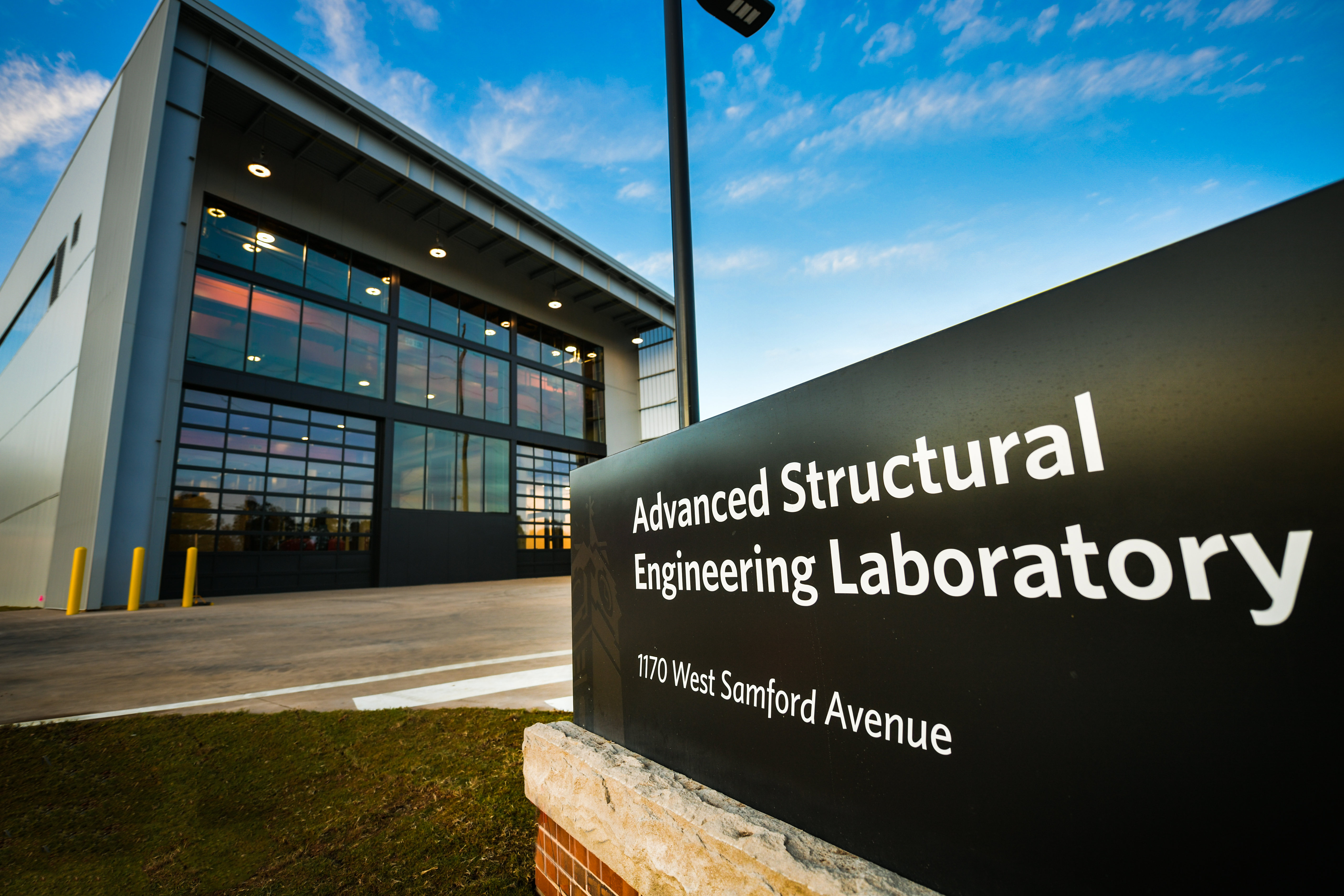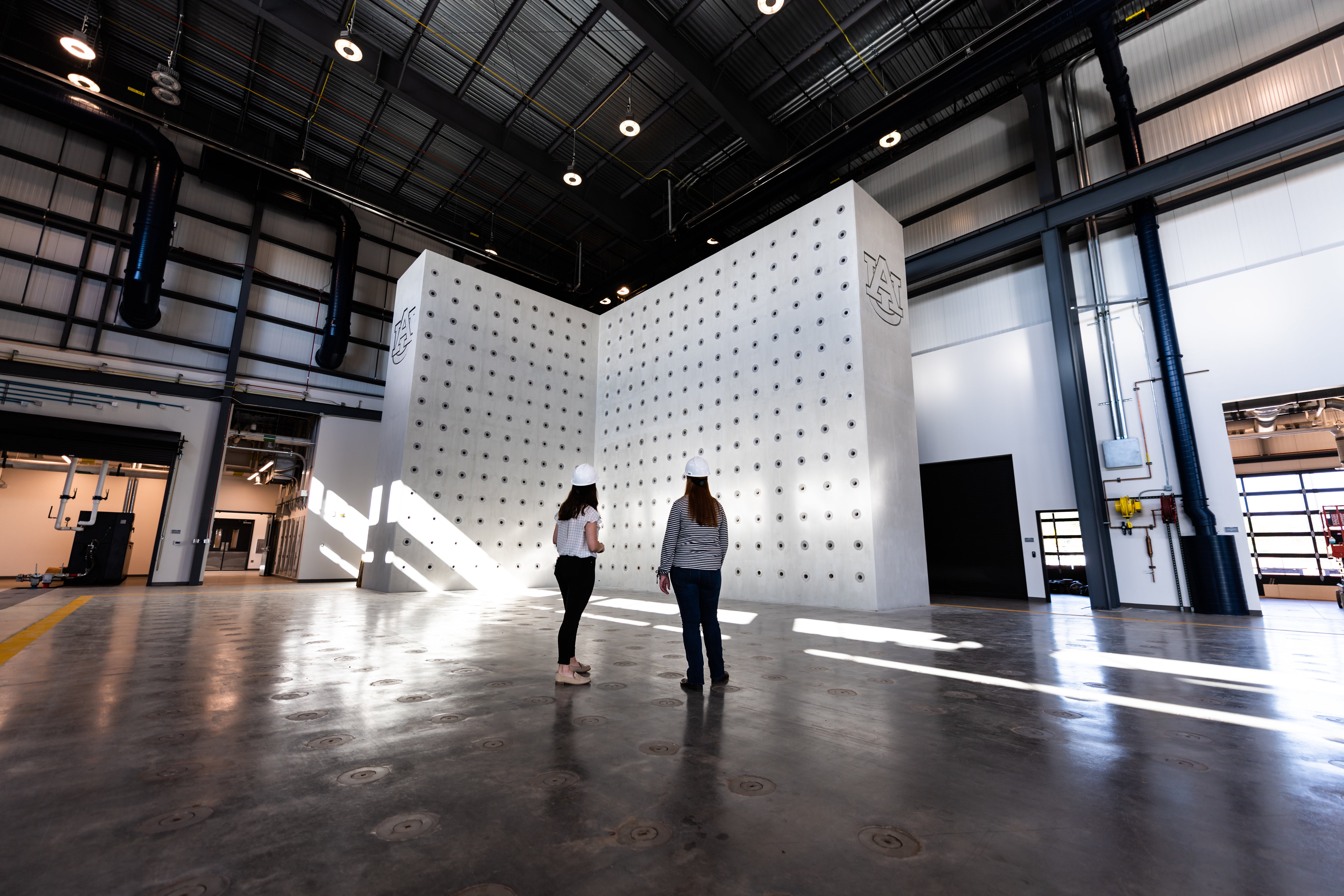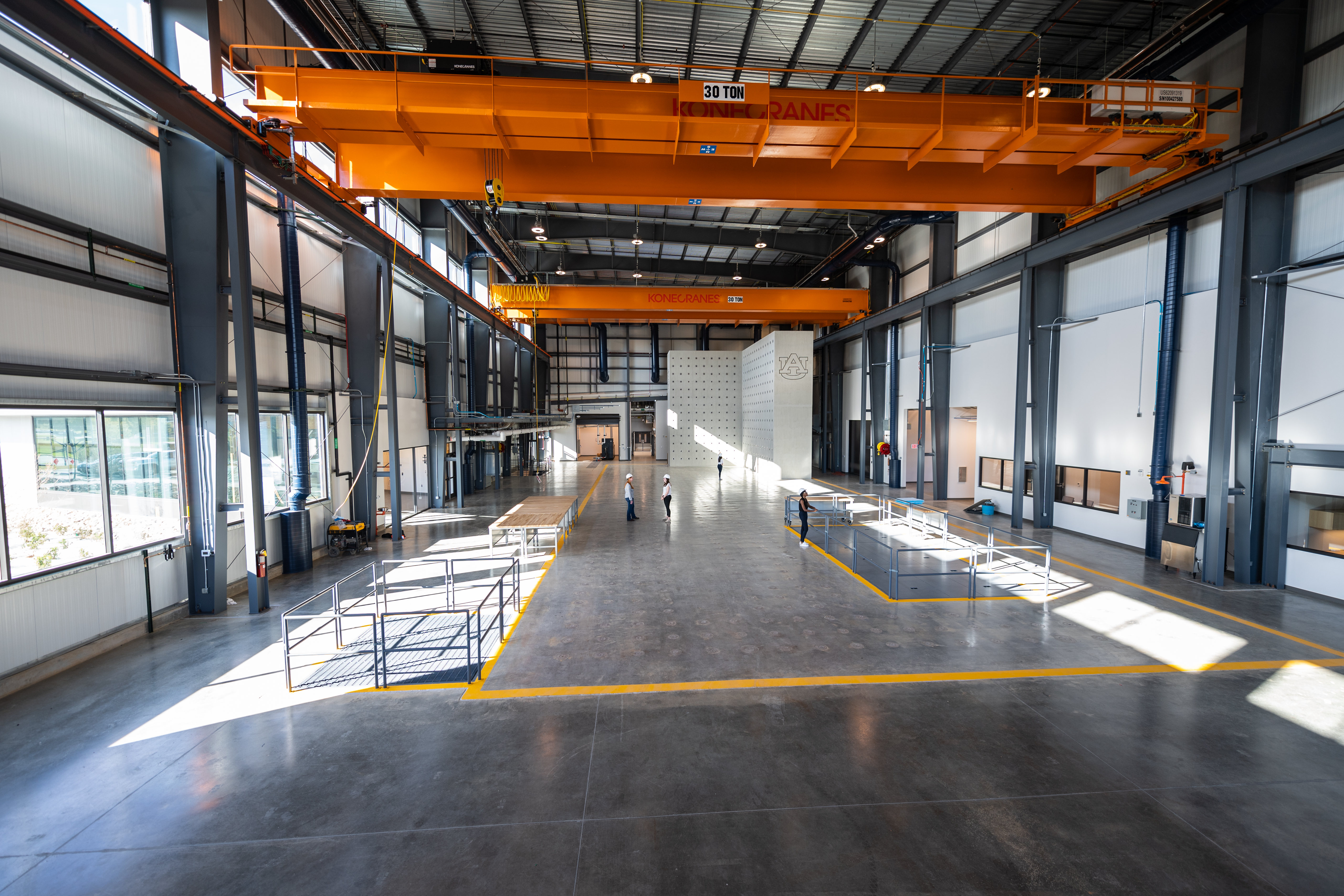 The Advanced Structural Engineering Laboratory (ASEL) at Auburn University is a state-of-the-art facility for experimental characterization and performance testing of engineering materials, structural components, structural systems, geotechnical materials and integrated soil-structure systems. The three areas of the ASEL are the large-scale structural and geotechnical testing laboratory, the concrete materials laboratory and the administrative wing. The administrative wing houses primarily offices and conference spaces as well as an area for viewing the large-scale laboratory.
The Advanced Structural Engineering Laboratory (ASEL) at Auburn University is a state-of-the-art facility for experimental characterization and performance testing of engineering materials, structural components, structural systems, geotechnical materials and integrated soil-structure systems. The three areas of the ASEL are the large-scale structural and geotechnical testing laboratory, the concrete materials laboratory and the administrative wing. The administrative wing houses primarily offices and conference spaces as well as an area for viewing the large-scale laboratory.
 The large-scale structures lab has a 120 ft x 45 ft (5400 ft2) strong floor and a 30 ft tall L-shaped strong wall with orthogonal leg lengths of 19 ft and 31 ft. The strong floor and strong wall have tiedown points on a 2 ft x 2 ft grid over the surface. Contained within the strong floor is a 20 ft deep geotechnical chamber with plan dimensions of 24 ft x 10 ft. This unique laboratory facility generates the ability to test full-scale structural components and systems, large-scale geotechnical testing, and full-scale structural components and systems including the effects of the foundation and the soil. The strong floor and strong wall allow for loading in three orthogonal directions simultaneously on large or small structural components or systems. A modular reaction frame allows for various sizes of specimens as well as multiaxis loading nearly anywhere on the strong floor including the geotechnical chamber.
The large-scale structures lab has a 120 ft x 45 ft (5400 ft2) strong floor and a 30 ft tall L-shaped strong wall with orthogonal leg lengths of 19 ft and 31 ft. The strong floor and strong wall have tiedown points on a 2 ft x 2 ft grid over the surface. Contained within the strong floor is a 20 ft deep geotechnical chamber with plan dimensions of 24 ft x 10 ft. This unique laboratory facility generates the ability to test full-scale structural components and systems, large-scale geotechnical testing, and full-scale structural components and systems including the effects of the foundation and the soil. The strong floor and strong wall allow for loading in three orthogonal directions simultaneously on large or small structural components or systems. A modular reaction frame allows for various sizes of specimens as well as multiaxis loading nearly anywhere on the strong floor including the geotechnical chamber.
 The large-scale lab is outfitted with a large array of hydraulic equipment to apply loads and displacements. A 180 gpm MTS hydraulic pump powers the 3,000 psi hydraulic system. Nine hydraulic actuators that range in capacity from 52 kips up to 446 kips can be used for both static and dynamic loading. In addition, a wide array of 10,000 psi hydraulic cylinders with a capacity range from 30 tons up to 500 tons are available for static testing of a wide variety of structural components and systems.
The large-scale lab is outfitted with a large array of hydraulic equipment to apply loads and displacements. A 180 gpm MTS hydraulic pump powers the 3,000 psi hydraulic system. Nine hydraulic actuators that range in capacity from 52 kips up to 446 kips can be used for both static and dynamic loading. In addition, a wide array of 10,000 psi hydraulic cylinders with a capacity range from 30 tons up to 500 tons are available for static testing of a wide variety of structural components and systems.
To support data collection, four high speed data acquisition (DAQ) systems are available. Each individual system has at least 60 channels with the capability of acquiring data from a wide variety of sensors (strain gages, displacement transducers, load cells, accelerometers, inclinometers and thermocouples). The systems can also be combined for larger or more complex tests. Non-contact sensing capability includes a Leica LIDAR system and a Digital Image Correlation system from Correlated Systems. Two dynamic Universal Testing Machines (UTMs), one 22 kip and one 225 kip capacity, are also in the large-scale laboratory. The 22 kip UTM has an environmental chamber for high and low temperature testing (-200 F to 1000 F). The wind testing capability in the lab is highlighted by two Pressure Loading Actuators (PLAs) capable of replicating hurricane level dynamic wind loads on structural components and systems.

